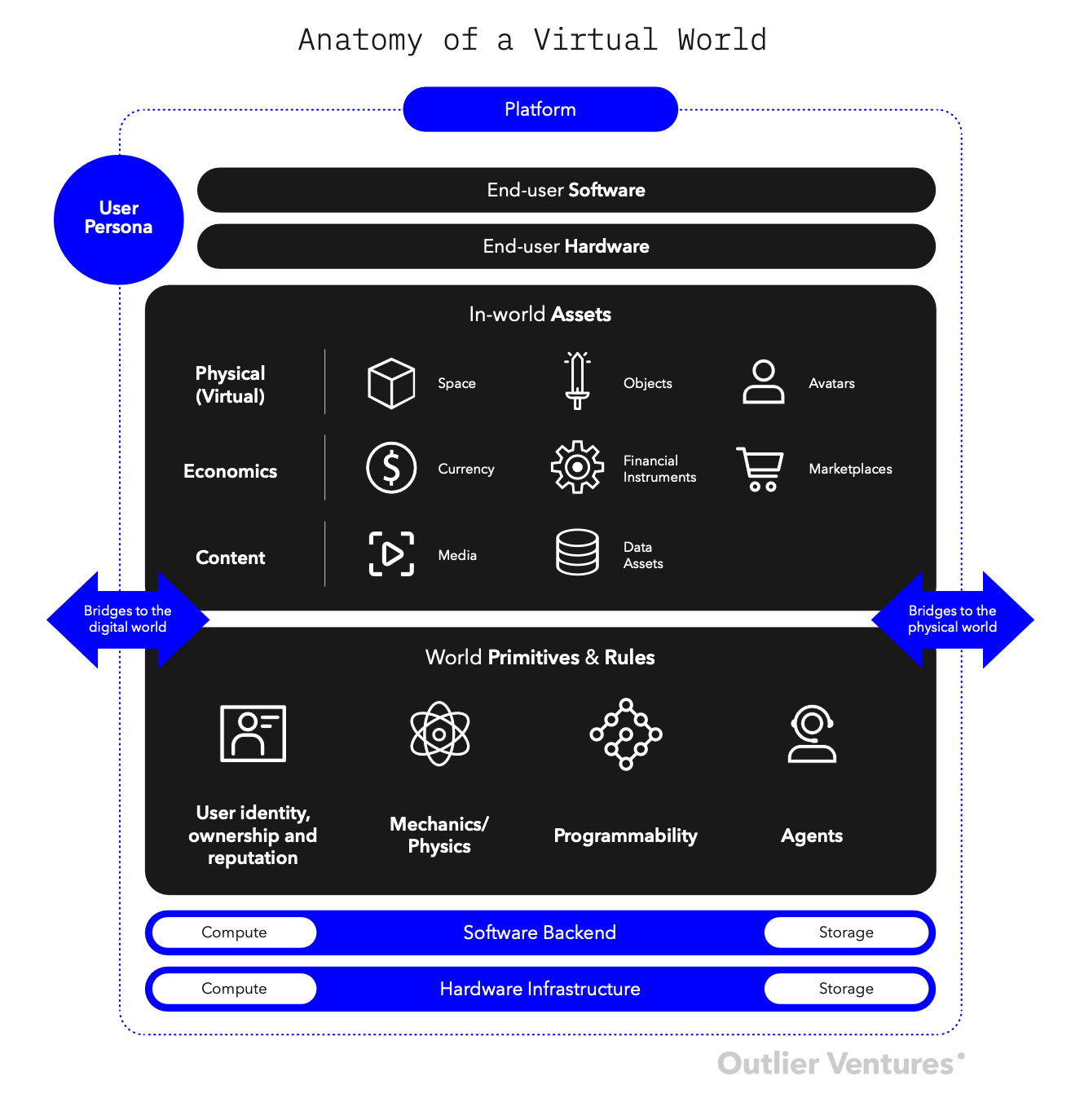A way to approach this is to look at the anatomy of any given instance of the Metaverse as a platform at its various levels of the stack as we have outlined below.

- User persona: the identity and properties of end-users, including their name, avatar, ownership of assets, reputation.
- End-user hardware and software: the hardware devices and software through which end users experience the world, including VR / AR headsets, PCs, gaming consoles, client software
- In-world assets: the assets that exist within the virtual world
- Physical (virtual): the space of which the world is composed, such as sections and parcels. The objects that can exist within it, such as buildings, furniture, vehicles, wearables, collectibles, and avatars as a special case.
- Economics: economic elements of the world including in-world currency, financial instruments and marketplaces.
- Content: content that can be introduced into the world, including media such as images, audio and video, and structured data assets.
- World primitives and rules: how does the world work? The model for user identity, ownership and reputation. The mechanics and physics of the world. Can users fly? Run? How fast? Can objects be stacked on top of each other? Attached to buildings? Programmability and agents – in what ways can elements of the world be automated, and can autonomous digital agents interact with the world?
- Software backend: the backend components that make the world work, including
- Hardware infrastructure: the hardware on which the backend components of the world run. Servers in data center, cloud services, networking.
- Bridges: ways in which the world can connect to external systems and environments.
- To digital worlds: using shared layers for assets and economics, external programmability via APIs, teleporting to different virtual environments
- To the physical world: including AR based activities such as in Pokemon Go, and digital elements that have a physical counterpart, such as physical redemption for digital assets.
Each of these elements can exist in any virtual world, in some form or another, open or closed. Many centralized virtual worlds have in-game currencies, some have forms of in-game financial instruments, for example mortgages in Animal Crossing.
Outlier Ventures has been investing and accelerating the Web 3 ecosystem since 2013. In 2019 we launched Base Camp – an accelerator program for pre-seed startups operating in DeFi, NFTs and open data. We provide capital, help with your token design, access to our network of the best investors and founders of Web 3, back office support and mentorship.